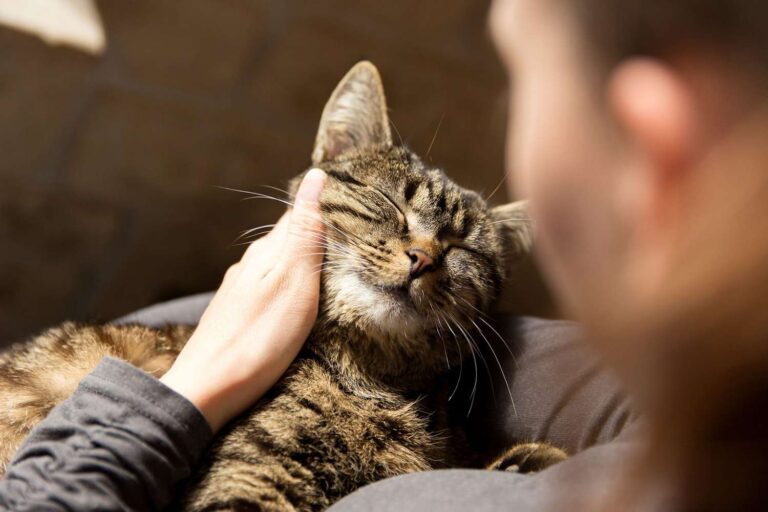When it comes to receiving affection from humans, it is natural to wonder if cats actually enjoy being petted. While some cats may absolutely love it and seek out physical contact, others may not be as fond of it. Just like humans, cats have their own unique preferences and personalities, which can influence how they respond to petting.
Physical affection, such as petting, can be a way for cats to feel loved and cared for. It can also serve as a form of socialization and bonding between cats and their owners. However, it is important to understand that not all cats enjoy the same type or amount of petting. Some may prefer gentle strokes, while others may prefer more vigorous petting. It is crucial to pay attention to their body language cues to ensure that they are comfortable and enjoying the interaction.
Additionally, it is worth noting that cats have sensitive areas on their bodies, such as their bellies or tails, that they may not appreciate being touched. Each cat is an individual with their own preferences, so it is essential to respect their boundaries and adjust the way we interact with them accordingly. By observing their reactions and responding to their cues, we can create a positive and enjoyable experience for both the cat and the human.
Physical Affection

When it comes to petting, it’s important to pay attention to a cat’s body language. Some cats may enjoy long strokes along their back, while others may prefer gentle chin scratches or head rubs. It’s crucial to observe their reactions and adjust your petting technique accordingly. Cats often display their preferences through purring, kneading, or leaning into your touch.
It’s also important to respect a cat’s boundaries. Cats are known for their independent nature, and they may not always be in the mood for physical affection. If a cat shows signs of discomfort, such as hissing, growling, or trying to move away, it’s best to give them some space and allow them to approach you on their terms.
Additionally, it’s worth noting that cats have sensitive areas that they may not enjoy being touched. These areas can vary from cat to cat but commonly include their belly, tail, and paws. It’s important to be mindful of these sensitivities and avoid touching these areas if your cat shows signs of discomfort.
In conclusion, understanding how cats respond to physical affection is key to building a strong bond with your feline companion. By paying attention to their body language and respecting their boundaries, you can ensure that your cat feels loved and comfortable in your presence.
Socialization and Bonding

When cats are petted in a gentle and soothing manner, it can create a sense of security and comfort for them. This physical contact releases endorphins in their bodies, which are feel-good hormones that promote relaxation and contentment. Regular petting sessions can help cats associate positive feelings with their owners and create a sense of familiarity and trust.
Furthermore, petting can also serve as a form of socialization for cats. By engaging in gentle strokes and caresses, owners can help their cats become more comfortable with human touch and interactions. This is especially important for kittens or cats that may have had limited exposure to humans in their early lives.
It is important to note that not all cats enjoy being petted in the same way. Each cat has its own unique preferences and boundaries when it comes to physical contact. Some cats may prefer shorter petting sessions, while others may enjoy longer and more intense strokes. It is essential for owners to pay attention to their cat’s body language cues, such as purring, relaxed body posture, and slow blinking, to gauge their comfort levels during petting.
In conclusion, petting plays a vital role in socialization and bonding between cats and their owners. It helps build trust, creates a sense of security, and promotes positive associations with human touch. By understanding and respecting their cat’s individual preferences, owners can strengthen their bond and provide a loving and fulfilling relationship for both themselves and their feline companions.
Individual Preferences

Understanding a cat’s body language cues is crucial in determining their individual preferences. For example, a cat that leans into your hand and purrs is likely enjoying the interaction and wants more petting. On the other hand, a cat that flattens its ears, tenses its body, or tries to move away may be indicating that it is not comfortable with the level or type of petting.
It is also important to pay attention to specific areas that a cat may enjoy being petted. While many cats enjoy having their head and chin stroked, some may have sensitive areas or preferences for being petted on their back, sides, or even their belly. Observing their reactions and body language can help you identify these preferences and provide the best possible experience for your feline friend.
- Pay attention to your cat’s body language cues
- Observe their reactions to different types of petting
- Experiment with different areas of their body to find their preferences
- Respect their boundaries and stop if they show signs of discomfort
Remember, every cat is unique, and it is important to approach petting with sensitivity and respect for their individual preferences. By understanding their body language cues and providing the affection they enjoy, you can strengthen the bond between you and your furry companion.
